
Meridian Farm
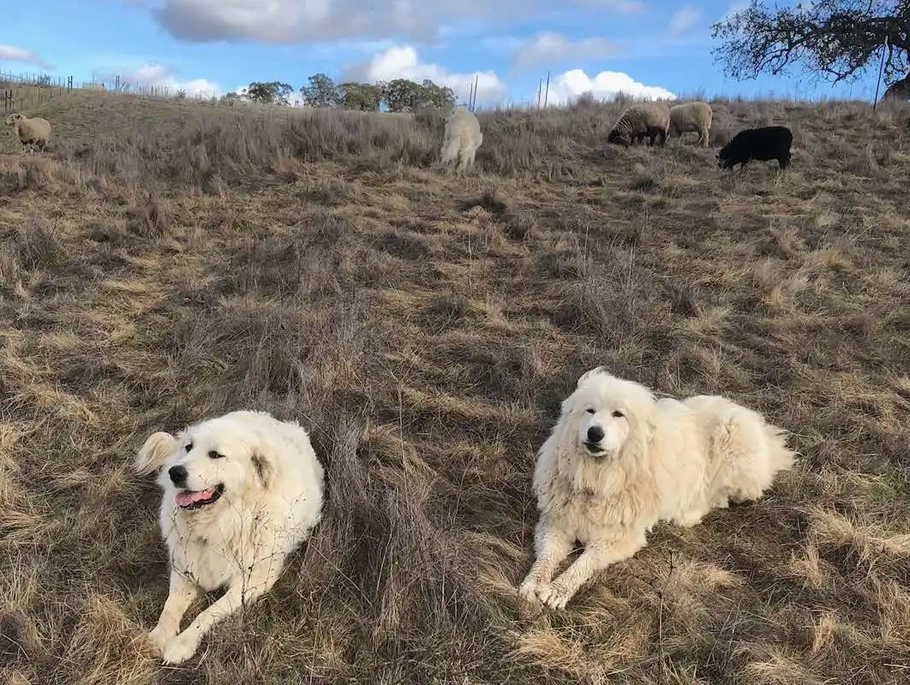

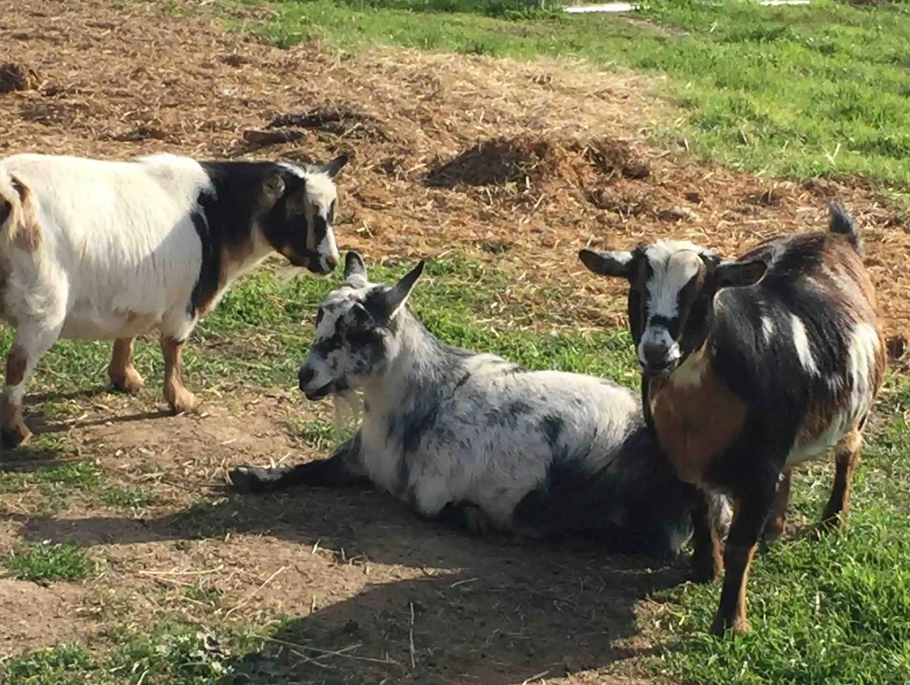
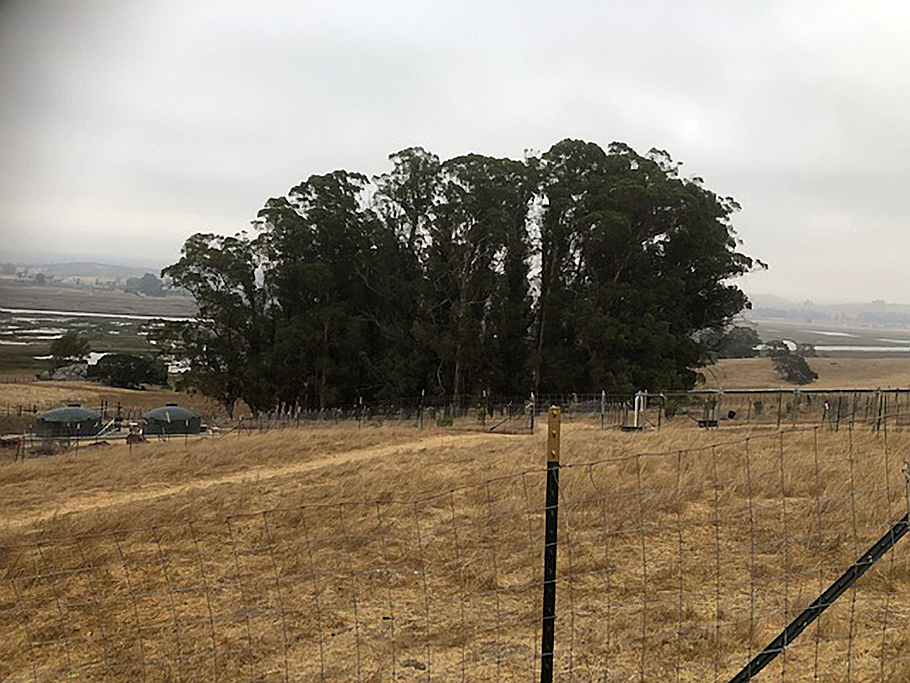

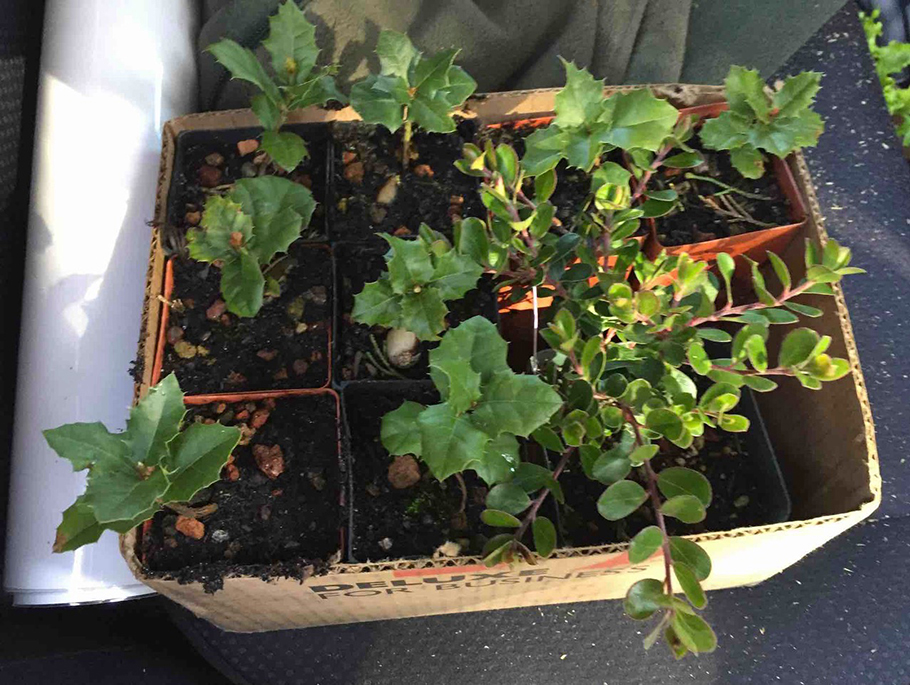
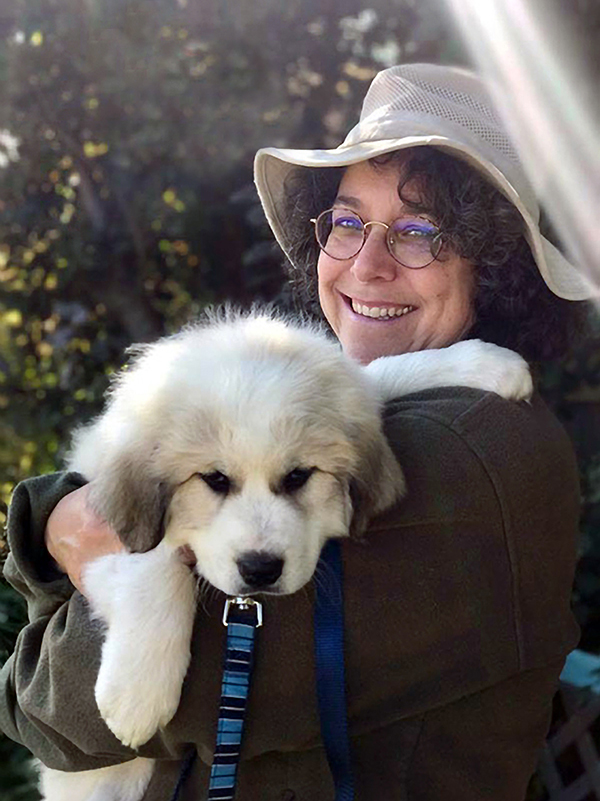 “We want everybody doing what they can do to sink carbon!” says Amy Lofting of Meridian Farm in Petaluma, CA. “My thing is education. My goal is to inspire people to get on it and start the project of sequestering carbon. I want to be part of this wave that we want to create.”
“We want everybody doing what they can do to sink carbon!” says Amy Lofting of Meridian Farm in Petaluma, CA. “My thing is education. My goal is to inspire people to get on it and start the project of sequestering carbon. I want to be part of this wave that we want to create.”
Meridian Farm(opens in new window) is not for profit. It’s about how two people (Amy and her husband Peter Giles) have learned what they need to know, applied it, and have been visibly transforming a highly degraded 9+ acre property on the edge of a major highway into a surprising “postage stamp” of greener vitality using regenerative practices. With the help of a few guardian dogs, Amy and Peter raise mixed-breed primitive sheep and produce no-kill climate beneficial wool. They also raise goats and chickens, and keep bees. Their intention is to do what they can to regenerate this property and offer it as a teaching farm to inspire others and show them what can be done. Amy is sharing stories on her website and is exploring a variety of ways to help others learn what they need to succeed, including how to write their own carbon farm plans. She wants to help people feel like they can join in the collective project of changing things for the better in the face of climate change. “More people are adding themselves in all the time," she says. “It’s easy to get isolated and feel otherwise, but this is how things are changing. . . . I’m of the belief that whether you are an apartment dweller or a smallholder or Big Ag, we all have a role to play.”
Why Regenerative Agriculture?
“What leads me to regenerative agriculture is that it is innately aligned with my philosophy of life,” Amy explains. She loved nature as a teenager and then met Wendell Berry when she was the editor of the high school literary magazine and was strongly influenced by his point of view. Later she took classes with Toby Hemenway(opens in new window), a leader in the permaculture movement and the author of Gaia’s Garden: A Guide to Home-Scale Permaculture. Amy describes permaculture as a design process based in observation of nature and learning to match one’s efforts to what is taking place on the land. This led to taking classes in other approaches to agriculture with a systems-based approach: Holistic Management, Biodynamic farming, and regenerative agriculture.
“I am a systems thinker. I tend to perceive pattern, and I tend to have both a global perspective and also a detail perspective. I want things that work. I’m super practical. And if it’s obvious to me that I’m engaging in something extractive that is ultimately going to be a dead end, I just don’t want to do it. It’s like a waste of my life to be spending my time that way!”
It’s also part of her spirituality. “Nature is a big part of my spirituality. When I was in high school, I thought I should be a forest ranger because I wanted to be immersed in nature all of the time. And I feel like I’m doing that now. I’m planting these California native oaks and manzanitas and ceanothuses. I’m learning about California plant communities. I’m taking care of baby trees every day. It makes me so happy. I’m taking care of animals. And it’s a way that I am getting good energy for my body and my mind and my spirit from the land. I think that all farmers experience some form of this, there’s some way that we all get happy from being on the land. It’s this juice that the land has that feeds us. I would say that for me, that’s the primary thing. And that’s probably what predisposed me to finding that first permaculture course. I wouldn’t want to farm any other way. It would be self-violating to me, and I would feel like I was out of integrity with who I am.”
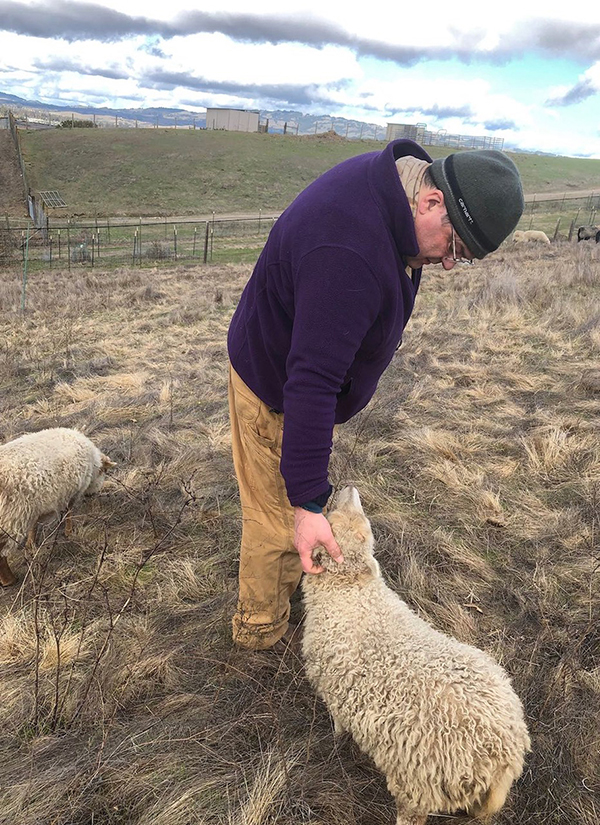 Regenerative Practices Used on Meridian Farm
Regenerative Practices Used on Meridian Farm
Meridian Farm is located on dry upland property that is not suited for crops so she chooses agricultural practices best suited to rangeland.
Rotational grazing(opens in new window) is one of their biggest regenerative tools. Because they are older, they didn’t want to be moving electronet fencing every day. Instead, they have been installing hard fencing. “We have cut up our nine acres into a lot of Lilliputian paddocks for our Lilliputian sheep. . . . Prescribed grazing or rotational grazing gets the fire risk down, and it feeds the land.”
Amy also wants to bring back perennial grasses to improve the quality and quantity of forage. She and Peter have tried rangeland seeding(opens in new window) and plan to do more of that as part of an NRCS contract they won. “We have absolutely noticed a difference doing that. You can see it. It’s much denser —it works!” But perennials do not grow as readily as annuals in California’s Mediterranean climate where it doesn’t rain at least eight months of the year. “Because we have a very limited rainy season, most perennials aren’t adapted to that. So what happens is you get this huge flush of annuals that are dominant, that get the jump on perennials when the rain starts. And they crowd everything else out. And then you’re out of luck because they have shallow little roots and they’re not as beefy as perennials for carbon sequestration in a lot of ways. The best way to get perennials back is rotational grazing. You can seed them and nothing comes up—they don’t survive! But when Nature does it through the stresses that you put on the land through the grazing, then you have a better chance."
Other practices: “I have applied compost(opens in new window) to rangeland. I will be doing more of that. I have built a hedgerow(opens in new window). I have planted silvopasture(opens in new window)—tree and shrub establishment—and mulching(opens in new window), I do everything I can to keep the soil covered.” They are also re-establishing native plants suitable for the local environment. However, because of drought and local ordinances, Amy and Peter water almost entirely with recycled water. “I take yesterday’s water from the livestock troughs and go up on the land early in the morning with the guardian dogs with a gallon bucket and dump it on a young plant. I walk back and go back with another gallon. I’m walking everywhere and I’m looking everywhere through that rotational grazing. As the animals move, I move, and the water moves onto the plants.” They are in the process of building rainwater catchment to try to ease the pressure. “Nine acres is a big bunch to chew but we’re doing our level best.”
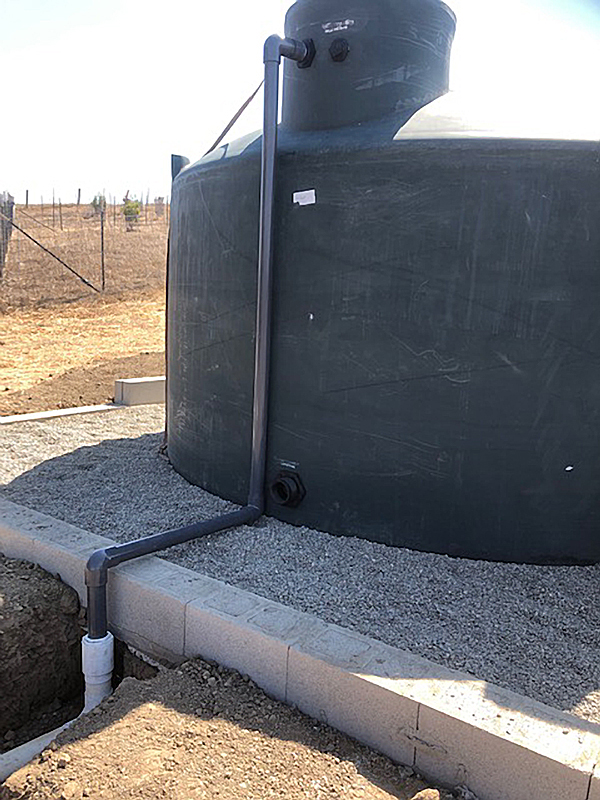 Investment in Equipment
Investment in Equipment
Meridian Farm is investing for the long haul.
Amy says, “The first thing I did was buy my husband a tractor while I was still working and my business was doing really well and I had all this cash. I bought a Kubota BX 23 that we call ‘Bertie’ (short for ‘Dig-bert.’). And I bought a lot of attachments. Once we have enough rainwater stored, I’m going to spray a dilution of Christine Jones’s(opens in new window) recommended brew (Gerry Gillespie’s SPICE method microbial inoculants (PDF)) everywhere. With that diluted brew spray, we actually have saved, knock on wood, a stand of Monterey cypress that we planted as a windbreak—another regenerative practice—that was drought-stressed. We had an arborist come out and he said ‘You’re going to lose all these trees.’ And I said ‘No! I don’t want to lose all these trees!’ I bought them when they were this big [a few inches] from this amazing lady. I am not going to let Margaret’s trees die if I can help it! I sprayed the trees with that stuff and the trees turned green again. So I want to spray that stuff everywhere. But we don’t have very much rainwater. We have to catch it and then we’ll be able to spray. So the sprayer attachment for Bertie will be very important equipment.
“And the husband is so darn handy—he’s been designing and building animal shelters that are thermally regulated. They have this inner sandwich so the underside of the roof that is above the animals’ heads is cool while the upper part that is under the sun is burning hot. He put a pipe to make an air sandwich in the middle. We have to build a bunch of animal shelters—we still don’t have enough shelters in the back pasture to be on the rotational grazing schedule I want. And I’ve got an NRCS contract and they’re going to help me with water infrastructure for some of the animal troughs. I also got a Carbon Farm Seed Fund Grant from Fibershed(opens in new window) for the rainwater catchment. We’re just putting the finishing touches on a 5000 gallon tank in the back to catch it off the roof of the thermally regulated animal shelter.
“I’m trying to make educational and inspirational systems that are also super functional for us. Both my husband and I are create-design-build people. So we’re building things and the big tool is that tractor because it’s like three men. I don’t think we could be doing what we’re doing without the tractor. We wanted a no-till seed drill back in the day when I thought we could do crops, but since we really don’t have water to do crops, it really doesn’t matter. Peter was going to build one. But we’re just not going to put our energy into that because it’s not worth it with our site conditions.”
What’s Working, Not Working, Still in Progress
“Everything’s in progress,” says Amy.
“What’s working is that we’re happy. We’re healthier than we used to be because this work is helping us be healthier and stronger. Our vitality is up.
“What’s really working is the animals and my relationship with the animals and my husband’s relationship with the animals! Every day, total joy. Ridiculous laughter from living with these sentient beings that are bringing us so much delight and are helping to heal the land. Every night my husband and I do this thing we call ‘favorite moment of the day.’ And it’s almost always about the animals. It’s fun! It’s really fun. So when I’m going out to feed them in the morning, I’m happy to see them and it’s the best moment in my day. I got into operant conditioning. Every day we do roll call—all my sheep know their names, they all come when they are called by name. And our sheep are really healthy. Vibrant. And our wool is beautiful. So that’s working, an actual physical measure.
“What’s also working is I got a CDFA Healthy Soils Grant in the first round of grants. And I got this NRCS contract. They decided I was real enough to give an NRCS contract to.
“It's working that I am now a graduate of Chico State’s Regenerative Agriculture Systems program. It’s working that I wrote our Carbon Farm plan. I couldn’t get anyone to do it for us because they’re all backed up and I’m not commercial. And I got a LandSmart plan(opens in new window) from the Sonoma RCD(opens in new window) through connections from the permaculture course. That’s what really started it. That was a conservation plan and that made me attractive to CDFA and that made me attractive to NRCS.
“I’m also fulfilling my purpose spiritually by doing this. So that’s working. That’s like the biggest thing that’s working. People who come to our farm say, “I can’t believe how much has happened here in such a short time.” There’s a term I learned in Carbon Farming class—ecosystem services. That’s where it lives in the uplift that people get. Why do folks want to go to a farm? Why does a guy who has a barely profitable farm in Vermont sell so many more duck eggs than his real farmer neighbors? Why? Because he has a video channel and people want to buy his duck eggs because they’ve been watching baby ducks! And so he has a business that is succeeding because the ecosystem services—the Nature hit that people are getting from his videos—is making people want his product! People are so hungry for that connection. People in this day and age are so divorced from the health and vitality that the earth gives that any way that they can get it, they’re there. So I see that people who come my farm– from what those people tell me and the look on their faces. That’s working!
“What’s not working is that we have all these foxtails, an invasive annual species. It’s hard. We’re old. But it’s what we want to do! We can’t imagine being anywhere else. So we’re sinking all this money into this piece of land because we want to keep doing this. This is our gym. This is our psychotherapy. This is our spiritual nourishment, working with the energies of the land.
“What’s not working is wildfires. And the smoke and pollution of wildfires.
“What’s not working is that everything is so fragmented. But what we’re all doing is going to make that work. We’re going to start cobbling things together. We’re going to start building these communities and communicating and inspiring people to take up the shovel. And do it. So what’s working is the people who are doing it and I’m one of those people now. This is my gig now.”
Advice for Other People
“Do what makes you happy. Pay attention to taking care of yourself because you are the one who has to take care of everything else. You have to be well. You have to eat well. You have to rest well. Be happy doing this! If this isn’t making you happy then do something else or figure out a different way of doing this in a way that will make you happy.
“So that would be the advice I would give to anybody! It is hard physical work doing this kind of land work. So if you aren’t happy, you are a drudge and a slave to something and that is not a good way to live.
“The second piece is write your own carbon farm plan. And I will help you! I’m planning to make an online course with video instruction to show people how to do this. I acknowledge how much time it takes to build a good plan, and, that most people are not planning-oriented, and may see this as a waste of time. But I don’t see it that way; I see it as time very well spent.”
The Importance of Carbon Farm Planning
A Carbon Farm Plan is a tool for people interested in the project of using farming to help draw down carbon from the overheating atmosphere and, by using the power of photosynthesis, bring it underground where it helps improve the health of the soil. Because every piece of land is different there is no one size fits all solution. The plan helps a farmer or rancher determine what choices might work best for their particular situation and working conditions. Amy is a strong advocate for learning to do this for yourself because of how helpful she found it to be for Meridian Farm.
“In learning to do this for myself, I learned a lot about the soil and the environmental conditions on our farm, in a way that was quite different from being presented with nuggets of technical data from a technical service provider. I understood context and how it all fit together in a way that I would not have been able to do if I just accepted what someone else told me, selectively.
“With this contextual understanding, I understand what the land is capable of carrying, and what it is not. It’s like understanding how an engine works instead of just turning the key to the car to start it. Because farming is such an investment of personal energy, time, money, etc., I feel much better about what I am putting into this effort, because I understand better why I am doing what I am doing in terms of what is happening in and on the land.
“All that comes from the site description, topography, hydrology, soil, etc. It oriented me to the place I am standing in new ways. I found out a lot of new information that I had not gleaned just from living here. And because I, as a non-Indigenous person, who bought my land from descendants of or purchasers from those who conquered and stole it, do not have the history of this land in ancestral memories and stories and relational understandings, I did not have another way to get this kind of relational understanding. I don’t say the Carbon Farm Plan gave me what a local Indigenous person would know—my knowledge is infinitely poorer—but it’s the best relational understanding I have been able to find in my years of study and searching.
“Then, we come to the carbon calculations. Seeing what the different models predict about impact is a powerful way to make some choices about what to do, and what not to do, on the land. Seeing that the models are just models, and learning about the different assumptions in the different models, helps me keep all this in perspective.
“I would like to see a bottom-up culture grow in strength for planning purposes. It is the land stewards who are out there sweating and investing. In my own experience receiving the blessing of several grants from technical sources, there was so much that was not communicated. I did not understand what was involved, could not possibly have understood it, from the engagement process with those grant providers at those times. Now, I understand much better because I have learned to work some of the bread-and-butter tools they are using. Now, I might do things differently because of that understanding, I might make different choices.
“I also think that as an extremely privileged, educated white person in a racist and elitist system, how much worse this all must be for people of color. I can’t imagine. So I am interested as part of my commitment to greater equity to contributing to some leveling of the playing field. I would like to create tools that any smallholder could use to enter into this mind exercise of Carbon Farm Planning with a clear, clean, well-lighted path, and, if they are interested and willing to spend the time, come to some kind of relational understanding like what I have been able to come to, that could help them, empower them, and give them some better tools for interacting with the powers-that-be system.
“So I am motivated by equity concerns, a love of education, a love of teaching…and the knowledge that there will be pots of money for carbon farming coming down the pike, and I would like more people to have access to those funds. But, fundamentally, I would like people to better understand where they are standing and what it’s in relation to, locally, regionally, and on the planet. Carbon Farm Planning is like an orienteering course for that."
Amy shares the Carbon Farm Plan she made for Meridian Farm here.(opens in new window)
